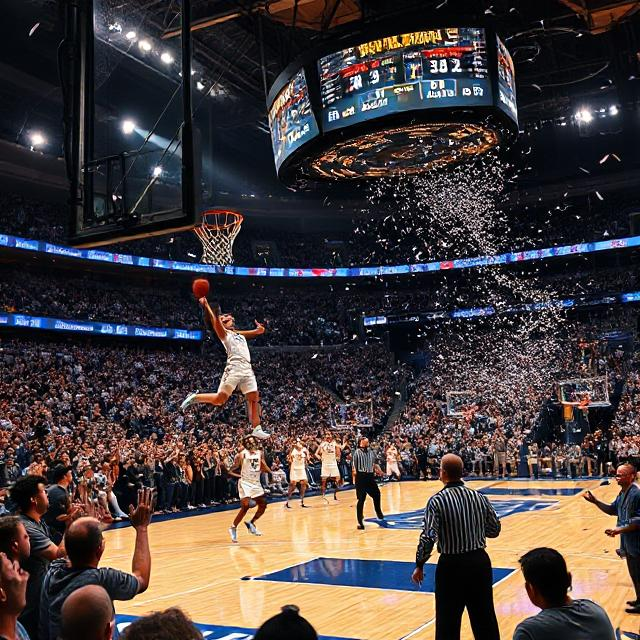The Ultimate Guide to Men’s March Madness: History, Format, and Why It’s So Exciting
March Madness is one of the most thrilling sporting events of the year, captivating basketball fans across the United States. Every spring, the NCAA Men’s Basketball Tournament brings together the top college teams to compete in an electrifying, single-elimination showdown for the national championship. The unpredictability, Cinderella stories, and buzzer-beaters make it a spectacle like no other. This guide will take you through everything you need to know about March Madness, from its origins to why it remains one of the most-watched events in sports.
The History of March Madness
The NCAA Men’s Basketball Tournament began in 1939, founded by the National Association of Basketball Coaches. At that time, it featured only eight teams competing for the championship. Over the decades, the tournament expanded, reaching 64 teams in 1985 and eventually 68 teams in 2011, incorporating the First Four play-in games.
The phrase "March Madness" was popularized by CBS broadcaster Brent Musburger in the 1980s, though it was originally used to describe Illinois high school basketball in the 1930s. The name perfectly captures the chaos and excitement of the tournament, where powerhouse programs can fall to underdog teams, and new heroes emerge on the national stage.
How the Tournament Works
Selection Sunday & The Bracket
The madness officially begins on Selection Sunday, when the NCAA Selection Committee announces the 68-team bracket. The teams are divided into four regions (East, West, Midwest, and South), and each is seeded based on their regular season and conference tournament performances.
The tournament consists of six rounds:
First Four – Four lowest-seeded teams compete in play-in games to secure spots in the First Round.
First Round (Round of 64) – The first true test, where teams battle for survival.
Second Round (Round of 32) – Winning teams move one step closer to the Sweet 16.
Sweet 16 – The best 16 teams remain, with matchups getting even more intense.
Elite Eight – Only the strongest teams advance to the regional finals.
Final Four & Championship Game – The ultimate showdown to determine the national champion.
The Cinderella Stories
One of the biggest reasons fans love March Madness is the potential for Cinderella stories—unexpected underdog teams making deep runs in the tournament. Examples include:
Florida Gulf Coast (2013) – The No. 15 seed stunned the nation by reaching the Sweet 16.
Loyola Chicago (2018) – Led by Sister Jean, the Ramblers made an unforgettable Final Four run.
Saint Peter’s (2022) – The No. 15 seed shocked everyone by reaching the Elite Eight.
These upsets make the tournament unpredictable and exciting, proving that anything can happen in March Madness.
The Top Teams and Programs in March Madness History
While Cinderella teams capture the headlines, powerhouse programs consistently dominate the tournament. Some of the most successful teams include:
UCLA Bruins – The most dominant dynasty, winning 11 national championships, including 10 under legendary coach John Wooden.
Kentucky Wildcats – A traditional powerhouse with 8 championships, known for producing NBA stars.
North Carolina Tar Heels – With 6 titles, including victories led by Michael Jordan and Roy Williams.
Duke Blue Devils – Coached by Mike Krzyzewski (Coach K), Duke has won 5 titles and remains a consistent force.
Kansas Jayhawks – A historic program with multiple championships, including their recent 2022 title.
Why March Madness Is So Popular
1. The Unpredictability
March Madness is unlike other sports tournaments because any team can win on any given day. The single-elimination format means one bad game can send a top seed packing. This unpredictability makes every game a must-watch event.
2. The Bracket Challenge
Millions of people fill out March Madness brackets each year, attempting to predict the winner of every game. However, the odds of picking a perfect bracket are astronomically low—about 1 in 9.2 quintillion! Still, the thrill of trying to outguess friends, coworkers, and experts makes it an exciting tradition.
3. The Future NBA Stars
March Madness is a showcase for future NBA talent. Many of today’s biggest stars, like Stephen Curry, Kevin Durant, Zion Williamson, and Anthony Davis, made a name for themselves in the tournament before heading to the NBA.
4. The Buzzer-Beaters & Drama
Every year, the tournament delivers unforgettable moments:
Christian Laettner’s shot (Duke, 1992) – One of the most iconic buzzer-beaters in history.
Kris Jenkins’ game-winning three (Villanova, 2016) – Sealed the championship in stunning fashion.
Jalen Suggs’ half-court shot (Gonzaga, 2021) – Sent the Bulldogs to the title game.
These moments define the magic of March Madness and keep fans coming back every year.
How to Watch and Enjoy March Madness
Streaming & TV Coverage
The games are broadcast on CBS, TBS, TNT, and truTV, with streaming options available on the NCAA March Madness Live app. Fans can watch games on multiple screens to follow all the action simultaneously.
Attending Games in Person
March Madness is held in arenas across the country, with the Final Four played in a massive stadium to accommodate tens of thousands of fans. Tickets are in high demand, but experiencing the energy of a live game is unforgettable.
Predictions for This Year’s Tournament
While predicting a champion is always difficult, top programs like Kansas, Duke, Kentucky, and Gonzaga are always strong contenders. However, a Cinderella team could once again steal the spotlight and make history.
Conclusion: The Madness Lives On
March Madness is more than just a basketball tournament—it’s a cultural phenomenon that brings together sports fans, alumni, and casual viewers alike. Whether you love the buzzer-beaters, the Cinderella stories, or the thrill of filling out a bracket, there’s something for everyone. With each new tournament, history is written, and new legends are born. Get ready for the madness!


